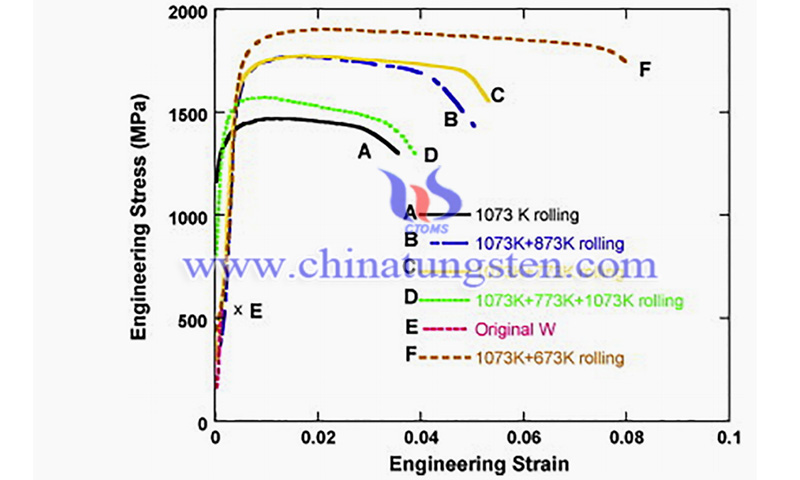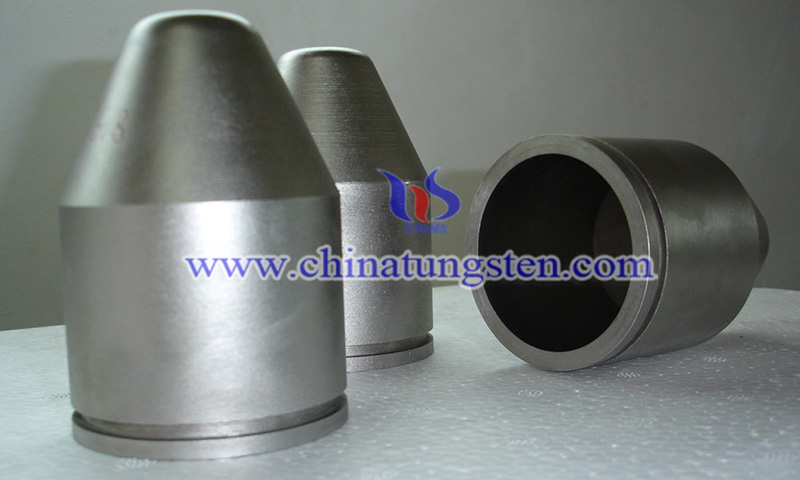Methods for Improving Tungsten Ductility
- Details
- Category: Tungsten Information
- Published on Thursday, 07 April 2022 18:06
A study conducted by researchers at the University of Utah in Salt Lake City, Utah, USA, describes ways to improve tungsten ductility. It is generally accepted that pure tungsten and tungsten alloys with minor alloy additions are brittle at room temperature and have high ductile-to-brittle transition temperatures (DBTT). Improving the ductility of tungsten is important in generating the range of tungsten manufacturing and applications.
The study titled “Methods for improving ductility of tungsten - A review” has been published in the International Journal of Refractory Metals & Hard Materials (75). The study was carried out by Chai Ren et al.
Although a large number of studies have been reported on improving the ductility of tungsten for decades, this remains a challenge, partly attributed to the lack of understanding of the mechanical properties of tungsten and its dependence on microstructure.
Alloying tungsten with rhenium is essentially the only known method of improving the ductility of tungsten through alloying. Although a large number of studies on the effects of additives, including oxides, carbides, and others, have been reported in recent years, the effects of these additives on the ductility of tungsten have so far been inconclusive or not significant under the influence of thermomechanical processing. The use of ultrafine particles or microstructures of nanocrystals to improve the ductility of tungsten is another approach that looks quite promising.
Tungsten is a refractory metal with unique properties, the highest melting point of any element, high modulus of elasticity, high density, high thermal conductivity, and excellent mechanical properties at high temperatures. These special properties make tungsten the material of choice for many applications. In recent years, tungsten has also been identified as one of the materials for plasma face components in fusion reactors due to its high melting point, low sputtering rate, and high plasma sputtering corrosion resistance.

However, a major drawback of tungsten is that it has little ductility at room temperature and its DBTT is very high. Tungsten's poor ductility poses a significant challenge to both its machinability and its performance in demanding applications. To improve ductility, researchers believe there are two main contributing factors: an intrinsic lack of close-packed planes and the poor cohesion of grain boundaries.
Among the various methods, thermomechanical processing has been found to be the most effective one. Rolling at temperatures below the recrystallization temperature can reduce the DBTT of tungsten from above 700°C to below 300°C. Several major factors contribute to the improved ductility of deformed tungsten, including the laminar microstructure and high dislocation density after rolling.
In order to minimize recrystallization during high-temperature processing, cold working based on conventional deformation techniques is also used to improve the tungsten ductility. Due to the very high recrystallization temperature of tungsten, "cold" machining can be performed up to approximately 1400°C. This prevents recrystallization and grain growth of tungsten during deformation. This prevents recrystallization and grain growth during the deformation of tungsten, resulting in finer layered microstructures and higher dislocation density in the material.
Compared to high temperature rolled material, tungsten cold-rolled at 400°C shows increased dislocation density, more low-angle grain boundaries, and a significant improvement in strength, as well as a lower DBTT.
Another well-known method of improving the ductility of tungsten is alloying with rhenium. It has been reported that Peierls stresses in tungsten can be reduced and additional slip surfaces can be promoted by so-called solution softening to form a solid solution of tungsten and rhenium. However, rhenium is a high-cost rare element, making these alloys prohibitively expensive for many applications. A great deal of research work has been directed toward replacing rhenium with tantalum, vanadium, titanium or other elements to achieve similar results.
However, to date, there has been little experimental evidence of the effectiveness of these alloying elements. In recent years, nanocrystalline or ultrafine particle structures have been explored as a way to improve the ductility of tungsten-based on advances in metal and ceramic research. Both top-down and bottom-up approaches have been investigated in order to produce nanocrystalline or ultrafine-grained tungsten.
The top-down approach refers to the refinement of grain size by thermomechanical means, such as rolling, extrusion, and severe plastic deformation techniques. The bottom-up approach refers to powder metallurgical processes in which nanoscale tungsten powder is compacted and sintered to obtain fully or nearly fully dense tungsten blocks with an ultra-fine grain microstructure.
As mentioned in this study: recrystallization, recovery, and grain coarsening generally increase the DBTT of tungsten, but dislocation mobility is fundamental to improving the ductility of tungsten-based alloys. This section will focus on the effects of alloy additions and impurities (e.g., tungsten rhenium alloys) that have a direct effect on dislocation mobility, in addition to alloy additions and additives that affect the microstructure and dislocation structure of tungsten.

In summary, recrystallization, recovery, and grain coarsening generally increase the DBTT of tungsten, but dislocation mobility is fundamental to improving the ductility of tungsten-based alloys.
Alloying with Re is the only proven and reliable method for tungsten to improve tungsten ductility through alloying. However, the low availability and high cost of this element inhibit its application. Significant success has also been achieved in alloying tungsten with other elements.
- Tungsten Manufacturer & Supplier, Chinatungsten Online: www.chinatungsten.com
- Tungsten News & Prices of China Tungsten Industry Association: www.ctia.com.cn
- Molybdenum News & Price: news.molybdenum.com.cn
- Tel.: 86 592 5129696; Fax: 86 592 5129797; Email: sales@chinatungsten.com



 sales@chinatungsten.com
sales@chinatungsten.com